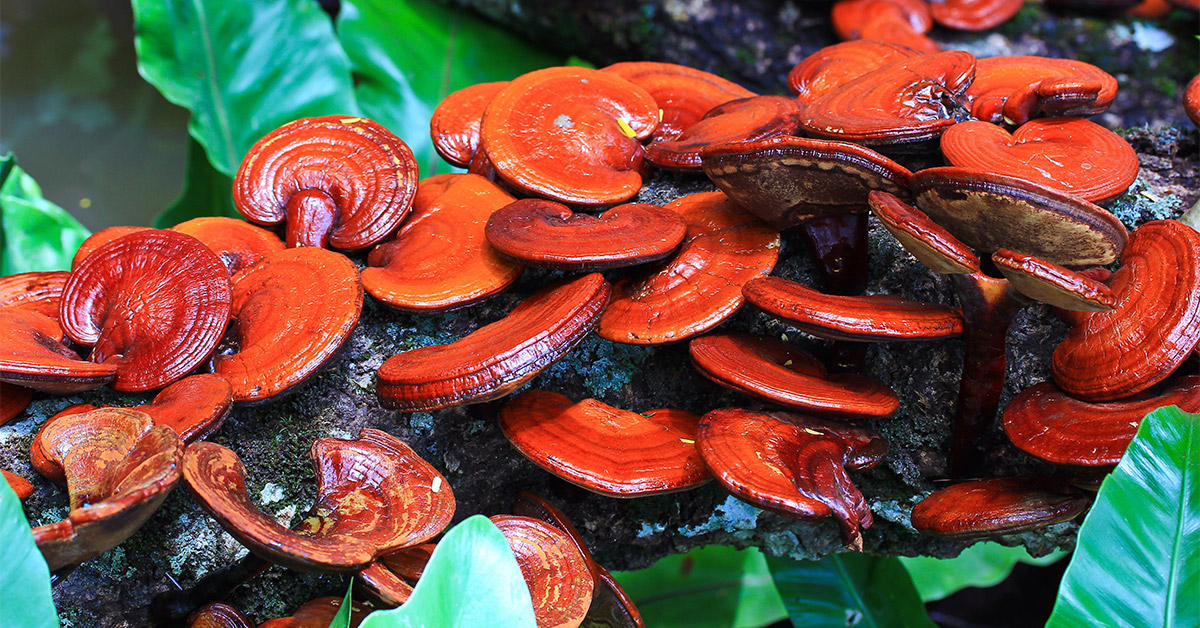WHAT HAPPENS TO OUR BODY WHEN WE CONSUME PROTEIN
The health benefits of it!

Ganoderma is a medicinal mushroom that has been used for centuries to treat diseases such as diabetes, cancer, inflammation, ulcers, as well as bacterial and skin infections.
In India, however, the potential of this fungus is still being explored. It is considered one of the most important medicinal mushrooms in the world, as its chemical components have numerous medicinal properties. It has earned names such as "the mushroom of immortality," "celestial herb," and "auspicious herb." It is globally known as the "red reishi mushroom."
Traditional Chinese medicinal plants are rich sources of many bioactive compounds that exhibit anti-inflammatory, antiviral, antioxidant, and anticancer properties. Regarding antiviral power, bioactive compounds isolated from around 30 medicinal plants have been found to inhibit coronavirus infection through various mechanisms.
Ganoderma lucidum is a widely used Chinese medicinal mushroom that belongs to the Polyporaceae family. The bioactive compounds isolated from this mushroom have shown strong immunoenhancing and antiviral activities.
The history of consuming this mushroom dates back over 5,000 years in China. It is also mentioned in the historical and medical records of countries such as Japan, Korea, Malaysia, and India. Unlike regular mushrooms, this particular mushroom grows only on wood or wood-based substrates.
Over time, many researchers have identified this fungus and have tried to recognize its components and properties. Research is still ongoing, and many interesting findings continue to emerge.
Ganoderma contains over 400 chemical components, including triterpenes, polysaccharides, nucleotides, alkaloids, steroids, amino acids, fatty acids, and phenols. These compounds exhibit medicinal properties such as immunomodulatory, anti-hepatitis, anticancer, antioxidant, antimicrobial, anti-HIV, antimalarial, hypoglycemic, and anti-inflammatory properties. The mushroom has a shiny red-brown color and grows naturally on wood.
It prefers broadleaf tree species such as acacia, poplar, oak, maple, honey locust, eucalyptus, hevea, and teak. The underside of this mushroom is porous, light white in color, and produces red spores when it matures. It thrives well in warm and humid climates and is typically found in mixed forests of subtropical to temperate regions.
Efforts are being made to popularize this mushroom for professional and livelihood purposes, cultivating it on wooden logs and sawdust.
Previously, it was collected only from nature, but the growing demand has driven efforts to cultivate it artificially. The first successful artificial cultivation took place in 1969 by technicians from the Chinese Academy of Sciences. Since then, this mushroom has been cultivated on various wooden logs and sawdust substrates, with additional substrates such as wheat bran, tea leaves, cotton bark, and others.
The parent culture of Ganoderma lucidum is usually prepared from the fruiting body using tissue culture methods, and it is further used to prepare its spawn. The mushroom takes about a month to mature on sawdust substrate, but it is mainly harvested once.
On wooden log substrates, it takes about 15 days to colonize and approximately 3-4 months to mature, with about three subsequent harvests.
In addition to pharmaceuticals, Ganoderma lucidum is also used as a key ingredient in the production of products such as tea, coffee, energy supplements, health boosters, beverages, baked goods, and anti-aging cosmetics.
Properties of Ganoderma Lucidum:
Antioxidant properties
Anticancer activity
Antiallergic action
Antiviral, antimicrobial & antifungal properties
Hypoglycemic effect
Immunoregulatory action
Helps reduce blood pressure
Assists in detoxifying the body
Helps reduce cholesterol levels
Application in India
The reason this mushroom has not gained as much popularity as other herbal products may be that its mass production is limited to countries like China, Japan, Korea, Malaysia, Thailand, and the United States. Most of the Ganoderma products produced in these countries are consumed domestically, with only a small amount of raw material being exported.
Large-scale industries in the Ganoderma sector are primarily based in these countries, making the products expensive in the rest of the world. Awareness of Ganoderma is spreading, and the demand for this mushroom has led many countries, including India, to produce it on a larger scale and manufacture its products.
However, current production is insufficient to meet the growing demand, and there is a need for the mushroom to be cultivated on a larger scale.
India, a country where the majority of the population relies primarily on agriculture, has significant potential to cultivate this mushroom.
It can be grown indoors and is therefore protected from the effects of extreme weather conditions, human-wildlife conflicts, harsh topography, and poor soil conditions.
In India, the mushroom is currently limited to laboratory research.
However, some successful attempts at cultivation have been made by various Indian organizations. It is grown on wooden logs (locally known as billets) in the country. Ganoderma has immense potential for livelihoods, but there are some challenges as well.
Due to the rising demand for herbal and natural health products during the pandemic, a window of opportunity has been created for large-scale cultivation and commercialization in India.
Dried fruiting bodies or raw powder of Ganoderma lucidum can be sold for around 4,000-5,000 Rs per kilogram.
There is a need to work specifically on the chemical analysis, quality assessment, and marketing of the mushroom cultivated by farmers in order to commercialize the products. Currently, we rely on other countries for raw materials and import them to meet the demand in India.
Thus, Ganoderma lucidum has all the potential for entrepreneurship as well as livelihood opportunities in India, and it just needs the right scaling among farmers.